Abstract
Purpose
The purpose of this study was to compare the functional abilities of the low bulb obturators with those of high bulb obturators in terms of patients’ evaluation.
Material and methods
This study included 11 maxillectomy patients who underwent postoperative prosthodontic rehabilitations. Two obturators of the same design except for different bulb heights, were fabricated for each of the maxillectomy patient. After two months of alternate use, the functions of the obturators were measured by investigating the patients’ subjective evaluations in terms of convenience, speech, nasality, leakage, and mastication and identifying their preferred prostheses. Wilcoxon signed rank test was used as a statistical method (P < .05).
REFERENCES
2.Desjardins RP. Obturator prosthesis design for acquired maxillary defects. J Prosthet Dent. 1978. 39:424–35.

3.Robinson JE. Prosthetic treatment after surgical removal of the maxilla and floor of the orbit. J Prosthet Dent. 1963. 13:178–84.

4.Beumer J., Curtis TA., Marunick MT. Maxillofacial Rehabilitation: Prosthodontic and Surgical Considerations. St. Louis: Elsevier;1996. p. 225–84.
5.Kornblith AB., Zlotolow IM., Gooen J., Huryn JM., Lerner T., Strong EW., Shah JP., Spiro RH., Holland JC. Quality of life of maxillectomy patients using an obturator prosthesis. Head Neck. 1996. 18:323–34.

6.Aramany MA., Drane JB. Effect of nasal extension sections on the voice quality of acquired cleft palate patients. J Prosthet Dent. 1972. 27:194–202.

7.Adisman K. Removable partial dentures for jaw defects of the maxilla and mandible. Dent Clin North Am. 1962. 849–70.
8.Ackerman AJ. The prosthetic management of oral and facial defects following cancer surgery. J Prosthet Dent. 1955. 5:413–32.

9.Oki M., Iida T., Mukohyama H., Tomizuka K., Takato T., Taniguchi H. The vibratory characteristics of obturators with different bulb height and form designs. J Oral Rehabil. 2006. 33:43–51.

10.Zarb GA. The maxillary resection and its prosthetic replacement. J Prosthet Dent. 1967. 18:268–81.

11.Brown KE. Peripheral consideration in improving obturator retention. J Prosthet Dent. 1968. 20:176–81.

12.Sharry JJ. Extensions of partial denture treatment. Dent Clin North Am. 1962. 821–35.
13.Kobayashi M., Oki M., Ozawa S., Inoue T., Mukohyama H., Takato T., Ohyama T., Taniguchi H. Vibration analysis of obturator prostheses with different bulb height designs. J Med Dent Sci. 2002. 49:121–8.
14.Kim HW., Kim CW., Kim YS. A clinical study on the satisfaction of complete denture patients. J Korean Acad Prosthodont. 1995. 33:440–51.
15.Tanaka H. Speech patterns of edentulous patients and morphology of the palate in relation to phonetics. J Prosthet Dent. 1973. 29:16–28.

16.Petrovic ´A. Speech sound distortions caused by changes in complete denture morphology. J Oral Rehabil. 1985. 12:69–79.

17.Oral K., Aramany MA., McWilliams BJ. Speech intelligibility with the buccal flange obturator. J Prosthet Dent. 1979. 41:323–8.

18.Lee SW., Chung MK. Factors influencing paitent satisfaction with complete dentures. J Korean Acad Prosthodont. 2005. 43:633–49.
19.Silverman S., Silverman SI., Silverman B., Garfinkel L. Self-image and its relation to denture acceptance. J Prosthet Dent. 1976. 35:131–41.

21.Kim HW., Kim CW., Kim YS. A clinical study of the satisfaction of complete denture patients. J Korean Acad Prosthodont. 1995. 33:440–52.
Fig. 1.
The mean scores and standard deviations of patients’ satisfaction on the convenience in use, retention, stability and irritating feeling with the H type and L type obturators.
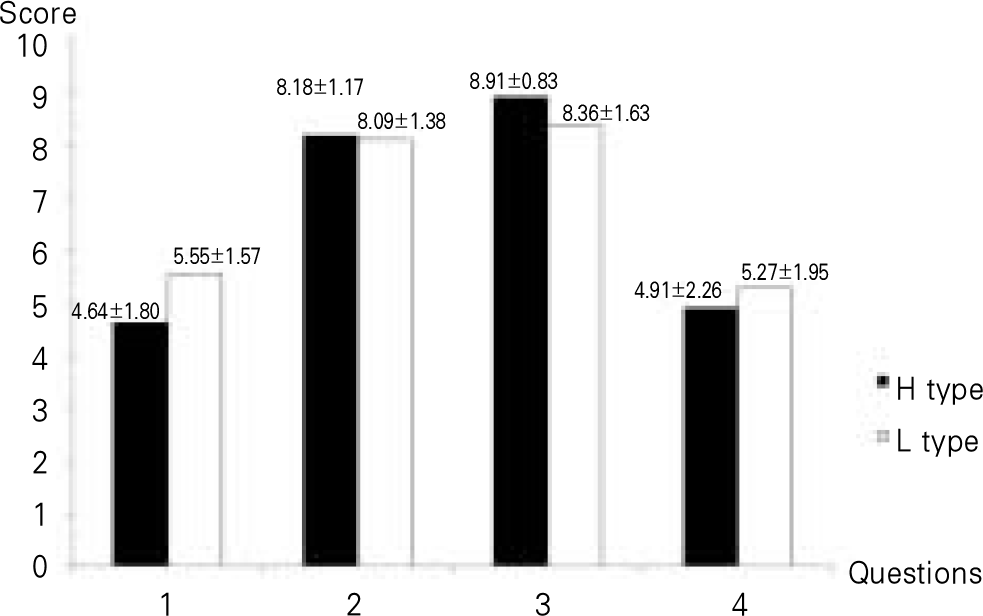
Fig. 2.
The mean scores and standard deviations of patients’ satisfaction on the communication level, voice change, pronunciation, and hypernasality with H type and L type obturators.
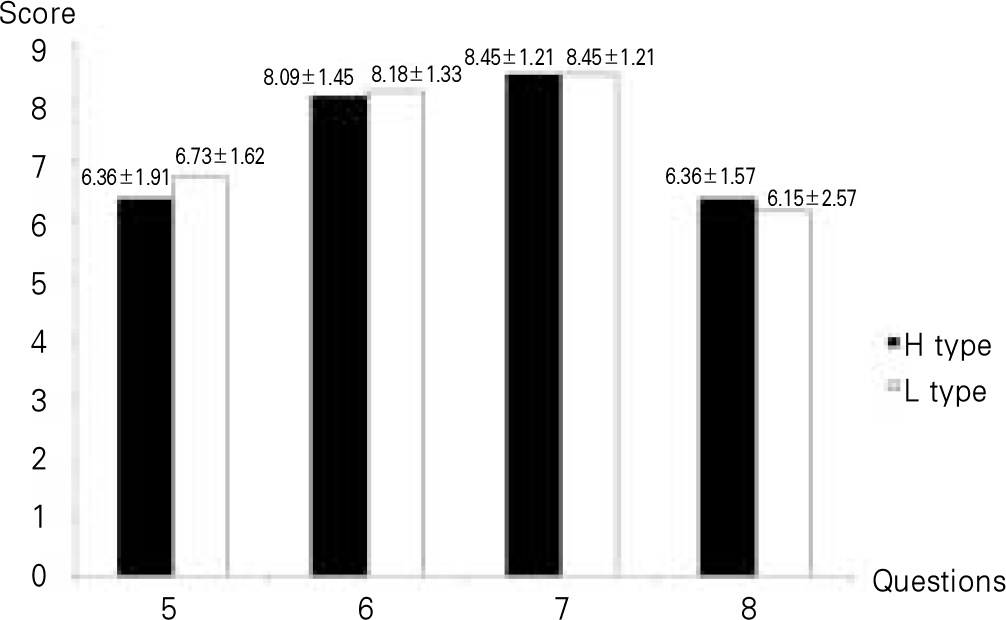
Fig. 3.
The mean scores and standard deviations of patients’ satisfaction on leakage of liquid, leakage of solid food and mastication with H type and L type obturators.
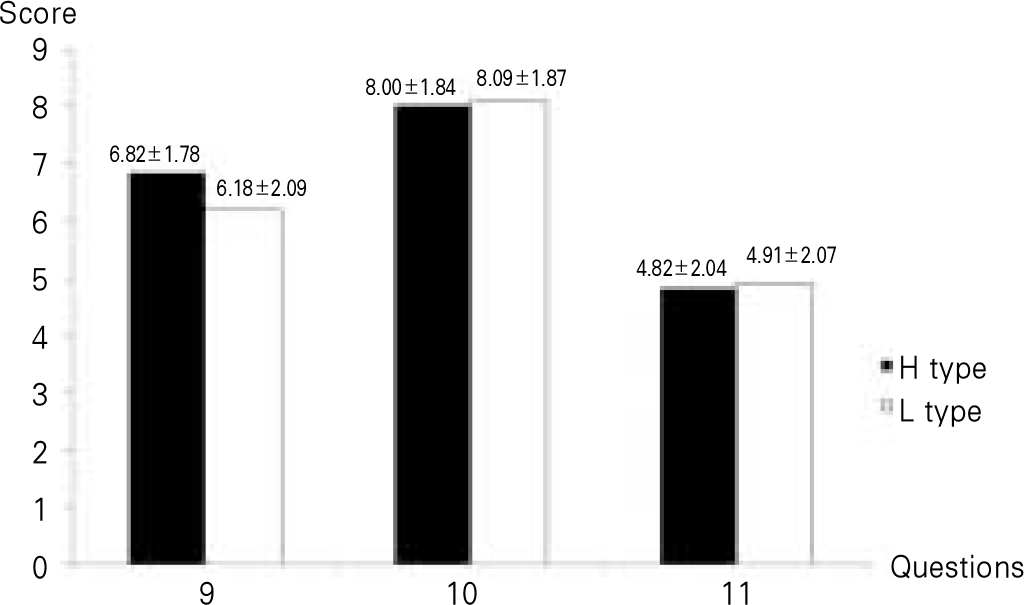
Table I.
Clinical data of maxillectomy patients
Table II.
Questionnaire used in the patients’ interview
Table III.
Patients’ choices on the type of obturators and their reasons




 PDF
PDF ePub
ePub Citation
Citation Print
Print


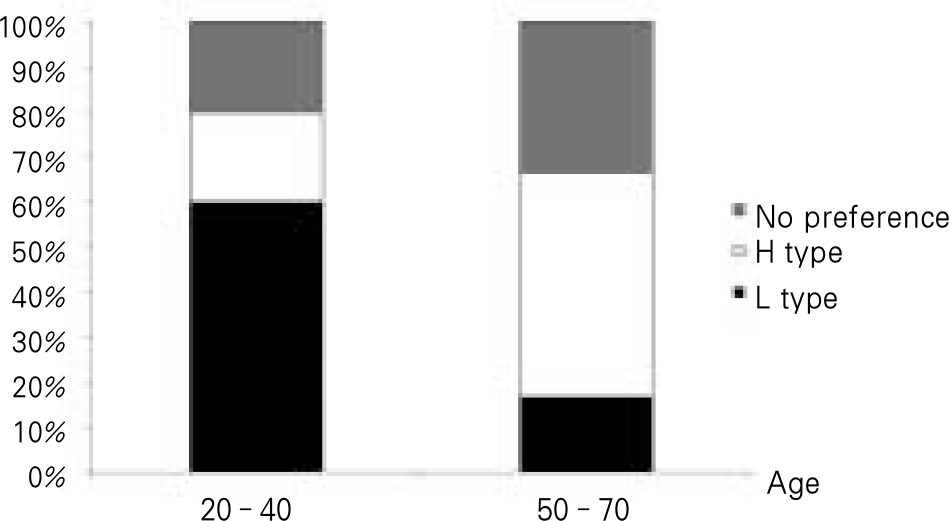
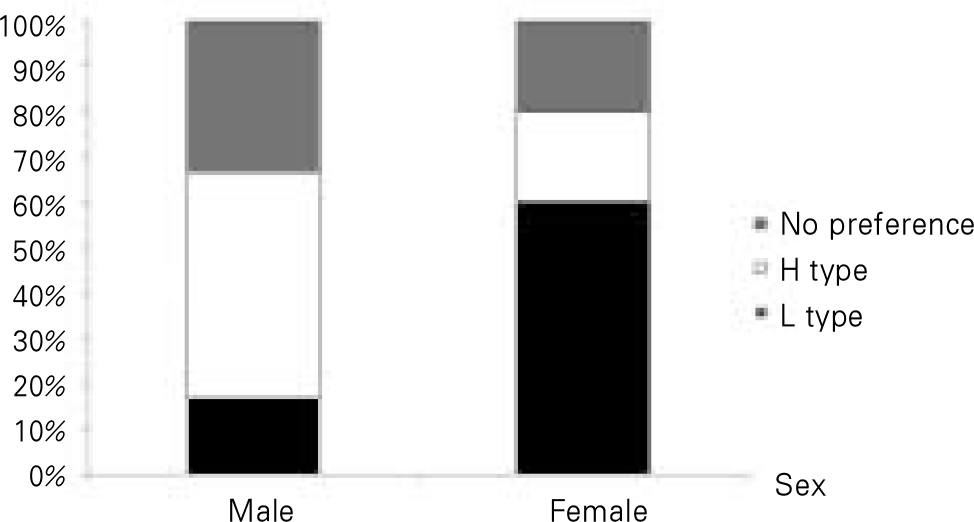
 XML Download
XML Download